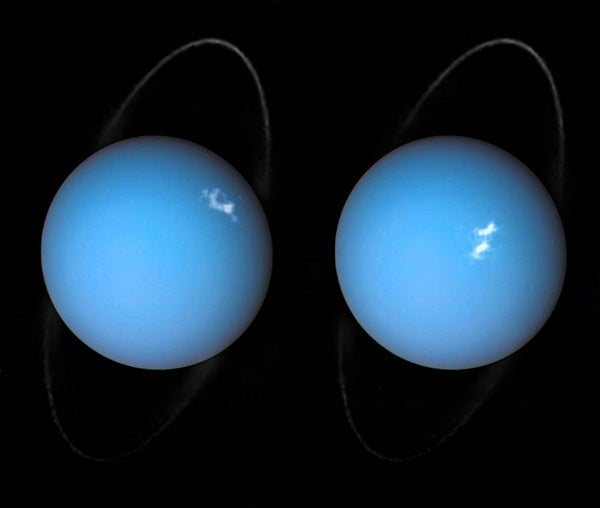Images taken by the Hubble Space Telescope show two different observations about Uranus: one photo shows the ring and the other shows auroras.
Auroras are light shows caused by electrically charged particles getting caught up in strong magnetic fields and colliding with gas particles. Though scientists have thoroughly studied the auroras on Jupiter and Saturn, the auroras on Uranus are more of a mystery.
They were first captured by the Hubble in 2011 and studied again in 2012 and 2014 by a team lead by an astronomer from the Paris Observatory.
After tracking interplanetary shocks from solar wind traveling to Uranus, the team used the Space Telescope Imaging Spectrograph (STIS) on Hubble to then study the effect on Uranus’ auroras. Not only did they collect enough data to reveal that the auroras rotate with Uranus, but they also found the planet’s magnetic poles that had gone missing after Voyager 2 in 1986.










